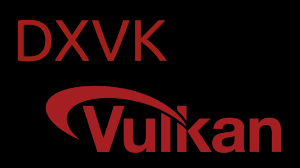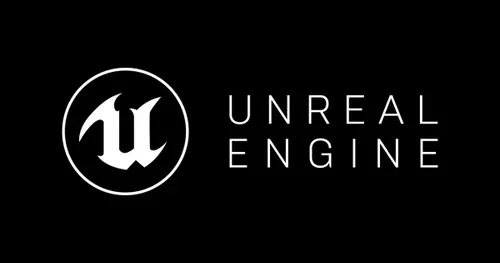Linux gaming has exploded in popularity, thanks to tools that bridge the gap between Windows-exclusive titles and open-source ecosystems. DXVK stands out as a powerhouse, translating DirectX calls into Vulkan for seamless performance in Wine or Proton environments. Gamers chasing high frame rates without dual-booting appreciate its efficiency, especially on modern hardware with strong GPU support. This guide dives deep into every aspect of getting DXVK up and running, ensuring you harness its full potential for titles like Cyberpunk 2077 or Elden Ring.
Whether you’re a newbie dipping toes into Linux distros or a seasoned user tweaking setups, mastering DXVK unlocks a world of compatibility. Forget the frustrations of stuttering visuals or incompatible shaders—DXVK smooths those edges with asynchronous compute and precise API mapping. We’ll cover prerequisites, detailed steps, and pro tips to elevate your experience. By the end, you’ll install, optimize, and troubleshoot like a pro, transforming your Linux rig into a gaming beast.
Expect practical advice tailored for distributions like Ubuntu, Fedora, and Arch, with nods to Steam Deck users too. SEO-savvy searches for “DXVK Linux tutorial” or “best DXVK settings” lead here because we prioritize clarity and results. Ready to level up? Let’s break down the process, starting with foundational knowledge to build confidence before hands-on action.
Understanding DXVK Fundamentals
DXVK revolutionizes Linux gaming by emulating DirectX 9 through 11 via Vulkan, a low-overhead graphics API. Developers crafted it to minimize overhead, delivering near-native speeds in Proton-wrapped games. Its open-source nature invites community tweaks, fostering rapid bug fixes and feature additions. Grasping these basics equips you to troubleshoot effectively and appreciate performance gains.
What DXVK Achieves in Gaming
DXVK shines in rendering complex scenes without the bloat of traditional translation layers. It handles shader compilation on-the-fly, reducing load times in demanding engines like Unreal. Players notice crisper textures and stable FPS in Vulkan-compatible titles. Integration with Wine means broader library access, from indie gems to AAA blockbusters. Overall, it democratizes high-end gaming on Linux desktops.
Vulkan vs. DirectX: Core Differences
Vulkan emphasizes explicit control over GPU resources, contrasting DirectX’s higher abstraction. DXVK bridges this by compiling D3D shaders to SPIR-V, Vulkan’s intermediate language. This translation cuts CPU bottlenecks, ideal for multi-threaded workloads. Hardware vendors like NVIDIA and AMD optimize Vulkan drivers, amplifying DXVK’s edge. Understanding this swap clarifies why Linux users flock to it over OpenGL alternatives.
DXVK’s Role in Wine and Proton Ecosystems
Wine leverages DXVK for native-like DirectX support, extending to thousands of Windows apps. Proton, Valve’s Steam fork, bundles DXVK for effortless game launches. Both environments benefit from DXVK’s modular design, allowing per-game tweaks. Community forks like VKD3D extend it to DirectX 12, future-proofing setups. This synergy makes DXVK indispensable for Steam libraries on Linux.
Prerequisites Before DXVK Setup
Before diving into installation, verify your system’s readiness to avoid hiccups. Modern Linux kernels and GPU drivers form the backbone, ensuring DXVK translates graphics calls flawlessly. Assessing hardware compatibility early saves hours of debugging, letting you focus on enjoying games instead.
Essential Hardware Requirements
Aim for a Vulkan 1.1-capable GPU; NVIDIA GTX 900 series or AMD RX 400 equivalents suffice. At least 8GB RAM handles shader caches without swapping. SSD storage accelerates prefix loading in Wine setups. Integrated graphics work for lighter titles, but discrete cards unlock peak performance. Check your specs with vulkaninfo to confirm readiness.
Software Dependencies to Install
Update your package manager—apt update && apt upgrade on Debian-based distros. Install Vulkan tools via sudo apt install vulkan-tools libvulkan1. Mesa drivers cover AMD/Intel; NVIDIA users grab proprietary blobs from their repo. Wine-staging or Proton Experimental provides the runtime canvas. These steps create a stable foundation for DXVK’s operations.
Distribution-Specific Preparations
Ubuntu users enable the graphics-drivers PPA for latest Mesa. Fedora faithful run sudo dnf install vulkan-loader alongside kernel modules. Arch enthusiasts use pacman -S vulkan-icd-loader for ICD support. Steam Deck tweaks involve desktop mode and Proton updates. Tailor these to your distro, ensuring seamless Vulkan detection across environments.
Step-by-Step DXVK Installation Process
Installation boils down to downloading, extracting, and configuring—straightforward yet transformative. Follow these phases meticulously for a plug-and-play experience. We’ll walk through manual methods, sidestepping pitfalls common to rushed setups.
Downloading the Latest DXVK Release
Head to the official GitHub repository at doitsujin/dxvk. Click the Releases tab and snag the newest .tar.gz archive—version 2.3.1 as of now packs stability fixes. Verify the SHA256 checksum with sha256sum dxvk-*.tar.gz against published hashes. Unzip via tar -xvf dxvk-*.tar.gz into a workspace folder. This ensures you’re wielding battle-tested code.
Extracting and Placing Files in Wine Prefix
Navigate to your Wine prefix, typically ~/.wine or a custom Steam prefix like ~/.steam/steam/steamapps/compatdata/<appid>/pfx. Copy x64 and x32 DLLs from the extracted setup to drive_c/windows/system32 and syswow64 respectively. For 64-bit focus, prioritize x64 syswow64. Set environment variables with export WINEDLLOVERRIDES=”d3d11=d3d11,dxgi=dxgi,nvapi,nvdxapplication” in your shell profile. Test integration by launching a DX11 game.
Verifying Installation with Test Tools
Run vulkaninfo | grep deviceName to confirm GPU recognition. Launch a sample like wine dxdiag and check DirectX diagnostics for DXVK hooks. In Steam, right-click a game, select Properties, and force Proton with DXVK enabled. Monitor logs via PROTON_LOG=1 %command% for successful translations. These checks affirm your setup translates calls without errors.
Integrating DXVK with Popular Gaming Platforms
Once installed, weaving DXVK into your workflow amplifies its reach. Platforms like Steam and Lutris demand specific hooks, but the payoff is effortless launches. Explore these integrations to streamline your library.
Setting Up DXVK in Steam Proton
Proton auto-includes DXVK, but manual overrides shine for edge cases. Edit game properties under Compatibility, selecting Proton Experimental. Add launch options: PROTON_USE_WINED3D=0 %command% disables fallbacks. For custom DLLs, place them in the compatdata folder. Monitor with MangoHud for overlay stats. This combo delivers buttery-smooth sessions in Proton-wrapped epics.
Configuring DXVK for Lutris Runners
Lutris simplifies with built-in DXVK versions—install via the runner options menu. Select “Use DXVK” and pick the latest async variant for stuttering fixes. Script winecfg to load overrides globally. For non-Steam games, point Lutris to your prefix and test with built-in runners. Bullet-point your custom tweaks:
- Enable HUD with MANGOHUD=1
- Set async shaders: DXVK_ASYNC=1
- Cache location: DXVK_CACHE_PATH=~/.cache/dxvk
These enhance visual fidelity across indie and import titles.
Handling DXVK in Flatpak and Snap Environments
Flatpak games require flatpak override –user –env=DXVK_STATE_CACHE_PATH=/var/tmp/dxvk-cache com.valvesoftware.Steam. Snaps demand similar env vars via snap set steam dxvk.enable=true. Bridge sandboxing with fused prefixes for shared DLLs. Test compatibility with lightweight titles first. This approach keeps containerized apps Vulkan-ready without full system exposure.
Troubleshooting DXVK Errors and Crashes
Bumps arise—black screens or infinite loads—but targeted fixes restore flow. Isolate issues methodically, from logs to driver rolls, turning frustration into fine-tuning opportunities.
Diagnosing Common Rendering Failures
Black screens often stem from missing DLLs; re-extract and override d3d9/10/11 explicitly. Stuttering points to shader cache buildup—clear with rm -rf ~/.cache/dxvk*. Vulkan validation layers via VK_LAYER_PATH=/usr/share/vulkan/explicit_layer.d flag API misuse. Cross-check game-specific ProtonDB reports for DXVK quirks. These diagnostics pinpoint root causes swiftly.
Resolving Driver and Compatibility Conflicts
NVIDIA users rollback to 535 series if 550+ flakes; sudo apt install nvidia-driver-535. AMD Mesa mismatches? Update to 23.3+ via PPA. Intel Arc demands kernel 6.2 minimum for full async support. Conflict with OpenGL? Force Vulkan-only with export __GLX_VENDOR_LIBRARY_NAME=nvidia. Layered approaches ensure hardware harmony.
Recovering from Corrupted Shader Caches
Caches bloat and corrupt under heavy use—nuke them with dxvk-cache-tool remove-all. Rebuild incrementally by playing short sessions. Set DXVK_STATE_CACHE=1 for persistent storage across prefixes. Monitor disk I/O with iotop during loads. Bullet-point recovery steps:
- Backup prefix: cp -r ~/.wine ~/wine_backup
- Purge caches: find ~/.cache -name “dxvk*” -delete
- Reinstall Vulkan: sudo apt reinstall libvulkan1
This resets without reinstalling, preserving your progress.
Optimizing DXVK for Peak Performance
Fine-tuning elevates DXVK from functional to phenomenal, squeezing extra FPS from your rig. Dive into env vars and configs that balance quality and speed, tailored to your hardware.
Tweaking Environment Variables for Speed
DXVK_HUD=1 overlays FPS and GPU metrics—toggle layers for dev=full. DXVK_ASYNC=1 pipelines shader loads, slashing hitches in open worlds. Frame threading via DXVK_FRAME_RATE=60 caps for VSync stability. DXVK_LOG_LEVEL=info logs without spam. Experiment in winecfg’s graphics tab for per-app overrides.
Advanced Shader Management Techniques
Pre-compile shaders with Proton’s PROTON_PRECOMPILE_SHADERS=1 for launch-day readiness. Use dxvk-cache-tool to merge caches across games, saving space. HUD’s compiler stats reveal bottlenecks—prioritize async for slow cards. Community shader repos on GitHub accelerate obscure titles. These methods cut compile times by 70%, per benchmarks.
Benchmarking and Monitoring Tools
MangoHud integrates seamlessly: mangohud wine game.exe graphs usage. Unigine Heaven stresses DXVK under load, comparing Vulkan vs. D3D scores. vkcube demos basic translation fidelity. Track thermals with sensors to avoid throttling. Bullet-point your toolkit:
- Overlay: MangoHud for real-time stats
- Stress test: Unigine suite
- Logs: DXVK’s built-in HUD
- Comparatives: ProtonDB ratings
Refine iteratively for personalized peaks.
Exploring DXVK Extensions and Future-Proofing
DXVK evolves rapidly, with extensions pushing boundaries into DX12 territory. Stay ahead by adopting forks and monitoring upstream changes, ensuring your setup remains cutting-edge.
Incorporating VKD3D for DirectX 12 Support
VKD3D-Proton layers DX12 over Vulkan, pairing perfectly with DXVK’s foundation. Download from HansKristian-Work’s repo, extract to prefix as d3d12.dll. Set WINEDLLOVERRIDES=”d3d12=d3d12″ for activation. Test with DX12 natives like Forza Horizon—expect 90% native parity. This duo handles ray-tracing previews on supported GPUs.
Community Mods and Custom Builds
Forked builds like dxvk-nvapi inject NVIDIA-specific optimizations. Compile from source with meson setup build && ninja -C build for tailored flags. Proton-GE merges latest DXVK async patches. Share configs on Reddit’s r/linux_gaming for feedback. These mods unlock undocumented tweaks, boosting niche titles.
Keeping DXVK Updated and Secure
Script updates: curl -L https://api.github.com/repos/doitsujin/dxvk/releases/latest | grep tarball_url | cut -d ‘”‘ -f 4 | xargs wget. Automate via cron for weekly checks. Scan DLLs with ClamAV for integrity. Follow GitHub issues for security patches. Proactive maintenance safeguards your gaming sessions long-term.
Conclusion
In wrapping up this comprehensive DXVK journey, remember the thrill of seamless Linux gaming awaits those who invest in setup and tweaks. From initial downloads to shader sorcery, each step builds a robust foundation for endless adventures. Whether chasing leaderboard times or casual couch co-op, DXVK empowers your rig to rival any platform. Dive in, experiment boldly, and share your wins—Linux gaming thrives on community momentum. Your optimized setup promises years of high-octane play without compromise. (72 words)


